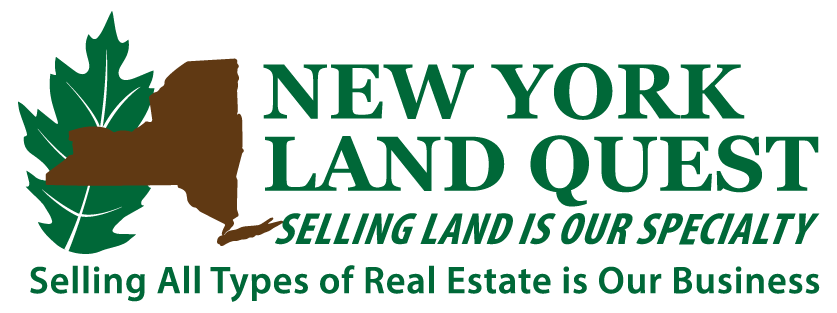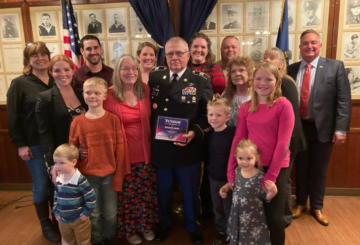How do we keep the Western NY Wilds wild?
by Bob Confer,
Enter the Western New York Land Conservancy
It was a savvy and accurate PR move when, in 2020, Allegany County adopted the moniker “Western NY Wilds” for branding purposes. It perfectly speaks to the essence of what keeps people here and brings tourists in.
With it, though, comes some responsibility.
How do we not lose our identity?
But more so, how do we keep the Western NY Wilds wild?
That’s where the Western New York Land Conservancy comes in.
The Land Conservancy (www.wnylc.org) is a regional non-profit land trust that permanently protects more than 7,500 acres of private land with significant conservation value in Western New York. It has hopes of adding more acreage and has Allegany County in its sights, specifically to protect the Black Creek watershed and keep it wild.
The importance of the Black Creek watershed
Black Creek has its headwaters in Keeney Swamp, a 3,100-acre chunk of state land that’s so special it’s the only place in Allegany County – and one of only a handful of locations in all of Western New York — where balsam fir occurs naturally. That pristine water flows out of the swamp and across multiple tracts of private land, ultimately reaching Angelica Creek, which then feeds the Genesee River.
Black Creek is home to trout (stocked and wild), other species of fish like darters, a plethora of salamanders, and birds like waterthrushes…all of which could be harmed if water quality tanked.
This watershed is being targeted not only to afford protection to the Genesee River and its natural inhabitants, but also to the people within the Black Creek watershed that rely on its water — Black Creek, Angelica Creek, and their various feeders, springs, and wells supply drinking water to the village of Angelica and numerous other homes in the area.
Sales vs. easements
To ensure the utmost water quality for the consumer of that water — plant, animal, and Man alike – the Land Conservancy wants to enter into protective agreements with landowners within the watershed, specifically those whose land borders the creeks or whose land has smaller tributaries and other runoffs (such as intermittent streams) that fill Black Creek year-round or seasonally. They are especially interested in larger parcels (50 acres or more) in the towns of Allen, Angelica, Birdsall, Grove, and West Almond.
This can be achieved one of two ways: Transfer of property or a conservation easement.
In the first case, the property owner would sell or donate land to the Conservancy (as a non-profit, the Land Conservancy can buy the land only at market value). They would then permanently protect the land as a nature preserve.
Perhaps the preferred means for all parties is to protect the wilds with an easement. Through a donation or sale of the easement the current landowner retains ownership of the land but forgoes development rights of that parcel (as does the next owner). That land, in perpetuity, is intended to stay as is, or close to it.
There is some flexibility afforded in easements for working forests (as long as they are sustainably logged, provide riparian protection, and have a plan developed by a certified forester). But, changing the landscape for things like housing developments, fossil fuel extraction, commercial enterprises, and industrial-scale solar energy are all frowned upon.
It should be noted that with the Black Creek project the Land Conservancy sees farmland as being equally attractive to forests when it comes to easements because it serves the ultimate goal of maintaining or improving the quality of the water. Farmers can still farm. They’ll just have to comply with some minor protections such as riparian buffers for 300 feet around the creek.
If selling development rights, they are generally purchased by the Land Conservancy for the difference in market value of the land with development rights and without.
Engaging the Conservancy
If your property fits the bill for the Black Creek project, make it a point to reach out the Western New York Land Conservancy very soon. You want your foot in the door before the funds are used up.
The Land Conservancy has $2,000,000 set aside for this specific endeavor in hopes of covering as much land as possible. These funds came to be from a Watershed Quality Improvement Program grant from the New York State Department of Environmental Conservation whose focus in on sourced water — the Black Creek watershed is just that for Angelica.
Your contact at the Land Conservancy is Marcus Rosten at 716.687.1225 ext. 118. His email address is mrosten@wnylc.org
If you enter into deeper conversations with the Land Conservancy, be sure to consult with your tax planner or lawyer, something Marcus will also encourage you to do.
This is just the beginning for the Land Conservancy
The Western New York Land Conservancy has been doing their thing throughout WNY for years, but this is their most high-profile endeavor to date in Allegany County.
It won’t be their last.
I recently had a long chat at the coffee shop with Marcus whom you might recognize for his infectious joy for nature when he appeared on Nature when the primetime PBS mainstay shined the spotlight on Niagara Falls last year.
We spoke at length about the Western New York Wildway, an ambitious and vital vision the Land Conservancy has. It’s a landscape-scale conservation initiative to protect and connect the largest tracts of wildlife habitat in the 8 counties of Western New York, many acres of the prime forestland can be found in Allegany County. The WNY Wildway will allow plants and animals to roam across the land as they once did, expand their ranges, and ensure their survival.

The WNY Wildway will protect the Western NY Wilds forever
I will note that the Western New York Wildway and the Western NY Wilds, though sounding similar, are two entirely different, yet complimentary things. The WNY Wildway is the Land Conservancy’s plan which will protect many areas in the region…among them the Western NY Wilds which is what Allegany County’s tourism office brands as the county and everything within it. They are unrelated entities, unrelated ideas, but one does protect the other.
I’m excited about what the future holds for the Western NY Wilds as the Land Conservancy gets more involved with the various nuances of nature in this county. It’s Black Creek today. It could be our “high peaks” region tomorrow.
For landowners who, like me, see themselves as stewards of the natural world, this may be the thing we’ve been waiting for.
I’ve often pondered the future of my forestland in Alma.
When I pass, will my kids see their role in preserving the forest in the same way that my father and I are? I would hope so, but you never know. By signing an easement, I’d be able to define land usage from the grave.
Or, what if property taxes become so exorbitant that I one day have to sell? A buyer might talk a good game, but how would I know they wouldn’t clear cut the forest or sell it off as numerous camps? That wouldn’t happen with a conservation easement in place.
Luckily, the Western New York Land Conservancy has various ways – that will outlive all of us — to ensure the sanctity of forests, farms, and other greenspaces, keeping the Western NY Wilds wild for future generations and for the living things we share this world with.







